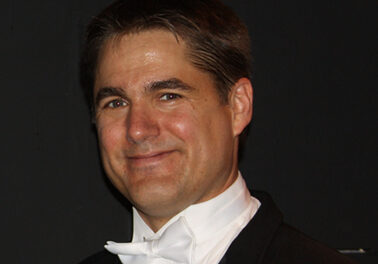Evan Ziporyn, emcee of sorts, and clarinetist for Bang on a Can, summed it up as succinctly as possible when at the start of the second half he said “…and now for something completely different.” Up to this point the audience had experienced a fascinating journey to another culture that was ear-opening and spiritually ennobling. What was to follow, for the most part, was an ear-splitting, desultory exhibition of musical insolence that left many in attendance bewitched, bothered and bewildered. Carolina Performing Arts had been advertising this concert as a marathon event that would consist of the first part in Memorial Hall, followed by the entire audience, en masse, moving to a nearby theater — the ticket even listed it that way. Instead, Emil Kang, UNC Chapel Hill Executive Director of the Arts, announced from the stage that we would all stay put and watch the entire concert from our seats in Memorial Hall.
Bang on a Can, a New York based ensemble celebrating their 20th anniversary, is committed to blurring the differences between rock, classical, jazz and electronic music and presenting concerts by virtuosic and passionate musicians who can make such music come alive. Nothing is off limits, so it is inevitable that when they are good they are very, very good and when they are bad, well, it can be quite horrid. This is no reflection on their musicianship, which is always at the highest level, but instead on their choice of music that is spongeworthy.
The stage was configured with the usual drum sets, banks of speakers and other traditional musical paraphernalia, except for one glaring anomaly at center stage: some sort of gold, ornate screen — apparently hiding some sort of exotic instrument behind it. This was a pat waing or Burmese drum circle that consists of 21 tuned drums. The first half featured Kyaw Kyaw Naing, the recognized master of this instrument. The sound is a lovely and captivating mix of steel drums, Indian tablas and symphonic kettle drums that is both foreign and familiar. The only downside to this performance was that the screen covers both the drums themselves and the musician’s hands playing them. I have been unable to find a reason for this, whether cultural or actually specific to the sound of the drums. This was a shame because there were moments where Mr. Naing played with such speed and agility that it seemed to defy human capability. Accompanying this featured instrument was a bass, cello, additional percussion, clarinet, electric guitar and piano.
The second half began with Big, Beautiful, Dark and Scary, a work written in 2002 by Julia Wolfe, one of the founders of Bang on a Can. The only description of this work is “This is how life feels right now.” Well, sorry about that Julia. This is an abrasive and abusive wall of sound (not the Phil Spector “Be My Baby” kind) that consists entirely of very slowly descending half-steps played at a level that would need to be notated in a score with about 87 “f’s.” There was no rest from the auditory rape that was just endured as it was immediately followed by the world premiere of How Deep are Rivers? (A Map is a Good Piece of Paper). The “composer,” Sonic Youth’s Lee Ranaldo, joined the band on bass guitar. Also at center stage, perched on a barstool, was an Apple laptop. Any semblance of harmonic, rhythmic or melodic (oh, those things!) movement was on vacation as we were left with a torturous assault of noise. Mr. Ranaldo also needlessly employed the use of a violin bow on his guitar — something that Led Zeppelin’s Jimmy Page did 40 years ago. But, in all fairness, they looked cool.
The second half was salvaged by guest artist Glenn Kotche, percussionist from the group Wilco. One selection, Snap, was commissioned by Carolina Performing Arts for this concert. Here, and in the previous piece Mobile, we got to hear an innovative composer that displayed his gifts for exciting rhythmic complexity within a framework that is not ashamed to use harmonic richness and dynamic variations.











